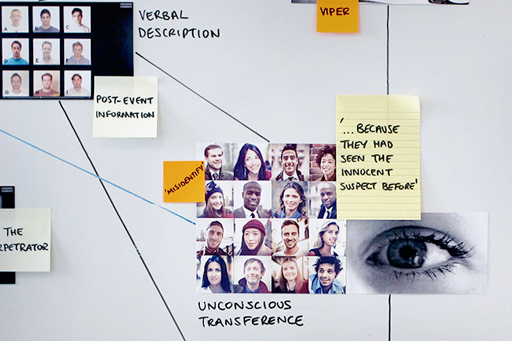1.4 Unconscious transference

The term ‘unconscious transference’ refers to the situation where a witness may misidentify a suspect (who is actually innocent) because they had seen the innocent suspect before, but not as the perpetrator of the crime.
When a witness looks at the people in an identification parade, they are, in essence, looking at each face to see if it is familiar. But what if the witness had seen one of the faces before, in a context other than that of the crime being investigated? It is always possible, even if extremely unlikely, that the witness will have seen one of the foils previously and could, as a result of getting a feeling of familiarity when looking at their image, select them from the line-up. Identifying a foil could mean that a guilty suspect walks free, but a far more worrying situation is where the witness has seen an innocent suspect before and therefore selects them. In that instance, the parade will have produced evidence that could be used to convict an innocent person.
Ross et al. (1994) described a real case where a sailor was picked out from a line-up, not because he had committed the crime but because the victim, a railway ticket clerk, had seen the sailor before when selling a ticket to him. In their experimental work, Ross and colleagues found that participants were three times more likely to ‘misidentify’ a bystander seen in a film of a robbery, than control participants who had seen a version of the film that did not include the bystander.
The odds of a witness having seen an innocent suspect prior to the line-up are hard to calculate, but it is possible that the police investigation itself could have exposed the suspect to the witness. For example, research has demonstrated that searching through a mug-shot album, and seeing the face of someone who then later appears in a parade, may well lead to a witness identifying that person, even if they are innocent and did not take part in the crime (Brigham and Cairns, 1988). Rather than identify the perpetrator, witnesses will identify the suspect whose face they had seen before, even though that person may not have been present near the original incident.
One likely explanation for why a witness would identify an innocent person who they had seen somewhere else, is that the memory for that person is mentally transferred into the memory for the crime. This happens without the witness’s knowledge (i.e it is done unconsciously), and is therefore referred to as ‘unconscious transference’.
